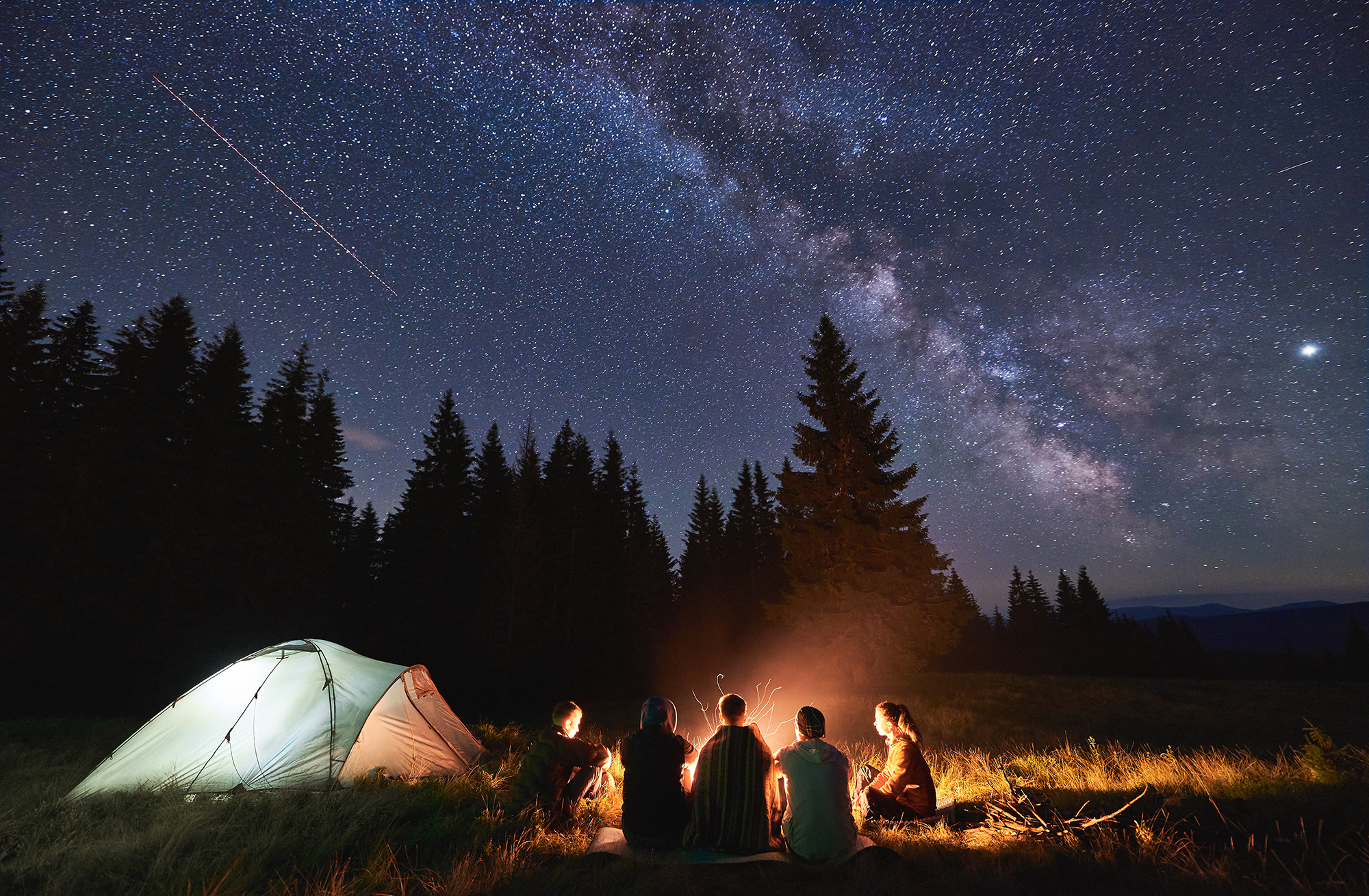Many articles on storytelling refer to this image: a group of people sit around a campfire. They stare at the flame that illuminates the darkness of the night. One person tells a story, while the rest listen in awe. An entertaining story is crowned with salvos of laughter, a frightening one with nervous nail-biting. This scene could have happened a hundred, two hundred, five hundred or two thousand years ago. Today… Hardly anyone lights bonfires anymore. But that doesn’t mean we don’t miss the story itself. And that this fire cannot be rekindled in the virtual space.
Table of Contents
Storytelling still in the spotlight
The last decades, especially in the world of marketing, education, public speaking in the broadest sense, but also business and technology, have been a period of great narrative shift. We have realized, not without the contribution of scientists, that storytelling still works: it allows us to convey information in a more attractive and effective way. And it’s a really powerful tool. You can use storytelling to deliver complex information that, outside the script of an intriguing story, would be simply unintelligible. It’s hard to imagine a lesson at school or an academic lecture today without a narrative element. This approach is increasingly being applied in the high-tech world as well. Data storytelling makes it possible to communicate very complex information in an effective way. Thus, it can help transform a presentation filled with numbers beyond recognition and make the audience not only remember the strings of figures and units, but also walk out of the meeting more satisfied.
On the other hand, a skillful narrator is able to achieve different benefits with the help of storytelling. After all, it’s a regular part of advertisements and various types of marketing materials. Stories build trust in certain brands and people, influence our purchasing decisions and, of course, are not indifferent to the state of our wallets. In any case, one thing is certain: they surround us because they simply work. Nothing surprising about that. They use a mechanism that is one of the most important driving wheels of our civilization.
Organizing an event? Light a fire
Today, online events – similar to storytelling – surround us from all sides. At work, they usually take the form of various types of meetings, after office we eagerly participate in webinars, and virtual conferences, summits, or trade fairs, which until recently were difficult to imagine outside crowded halls and convention centers, are also becoming a complete standard.
Setting up online events itself has become an important competence, the development of which should also be taken care of. But this applies not only to the technical side, especially since this one, thanks to the selection of appropriate tools, should not cause major problems even for less experienced users. Above all, if you want to create ideal online events – from meetings among your closest colleagues to huge, ticketed conferences for thousands of people – you need to learn how to design participant experiences.
The basic question should, therefore, be: “How can I use storytelling in my events?”. The answer is relatively simple (although the implementation itself may not be so simple): You need to look at your piece of virtual space as a campfire where invited guests can gather to enjoy passionate storytelling.
Building the camp
Let’s look at your online events from a broader perspective. The event itself is merely the culmination of some longer process and only the final step on a relatively long path. Even the best story without context is just a tangle of unconnected sentences and words. As an organizer, you must therefore ensure that every attendee is perfectly familiar with this context and thus able to properly understand the stories they will be dealing with.
How to do this? It’s impossible without the right environment to embed your stories in. With tools like ClickMeeting, you can design the attendee experience comprehensively – from the meta-level of your brand – through, among other things, the ability to personalize the design of your content, configure your own invitations, registration page, waiting room, thank-you message and mailing sequence accompanying the event – to what takes place directly during the meeting, webinar or conference. So you have full control over the content framing your stories. Using additional solutions, such as branding, you are also in charge of the immersiveness. It’s up to you to determine how deeply your participants will dive into the virtual narrative, and this directly affects their experience. And this is true no matter what size or nature your event is. For the largest ones – industry conferences, for example – you have an entire team of ClickConference experts to take care of the technical issues on your behalf. Your virtual campfires may already be lit, and the comfort and safety of your attendees will be supervised by experienced experts.
In a relatively simple way, often at an unconscious level, you can build a thread of understending connecting your audience with the speakers, but also more broadly with the hosts or the brand responsible for running the event itself. Without such preparation, they will be thrown in at the deep end. Even if they somehow manage to find the lost context, their experience will be decidedly not as positive. From the organizer’s perspective, this simply means lost opportunities and prospects. After all, a satisfied listener is more likely to return to hear another passionate story, bond with the brand for longer, and to recommend it to others.
Multi-level storytelling
Let’s return for a moment to the scene recalled at the very beginning, which takes place around a campfire. The group gathered around it may be relatively small. One person tells the story, the rest listen. Who knows, perhaps it’s a wanderer who, in exchange for a meal and a night’s lodging, spins his tale to kill time during the long fall evenings? But this scene could also look quite different: people gathered around the campfire exchange views, sometimes even argue, and in the end vote by raising their hands to determine who is right. And another scenario: not one bonfire, but several campfires. Perhaps some sort of festival or market day in a medieval town? At each one, a large group of people – those in the farther rows try to push through to hear what the storyteller has to say. After his story is over (or perhaps even before, if they just happened to feel like listening to something funny, and ended up with an update on the still ongoing war), the crowds mingle and sit down at other campfires to meet another narrator.
So it’s not only the scale that matters but also the way you communicate. As an organizer, you need to take this into account and build your encampment in such a way that participants can sit comfortably around the campfire, hear every word and see exactly the people for whom they have assembled, and, if necessary, also take an active part – speak, cooperate with each other or vote.
These are issues common to any type of event. But of course, in this respect a large conference means particular requirements. You need to light several bonfires, set up many benches nearby, take care of ticket sales and verification. Finally: you need to make sure that as many people as possible find out that such an event is going to take place and provide them with access to the most extensive information about it. Of course, you also won’t do without a staff of people involved in its preparation. Here again, the right environment plays a key role, but the margin for error is smaller. Therefore, choosing the right solutions is even more important, and the greater the range of services you get, the more time you can devote to what matters most – your attendees and spinning fantastic stories.










